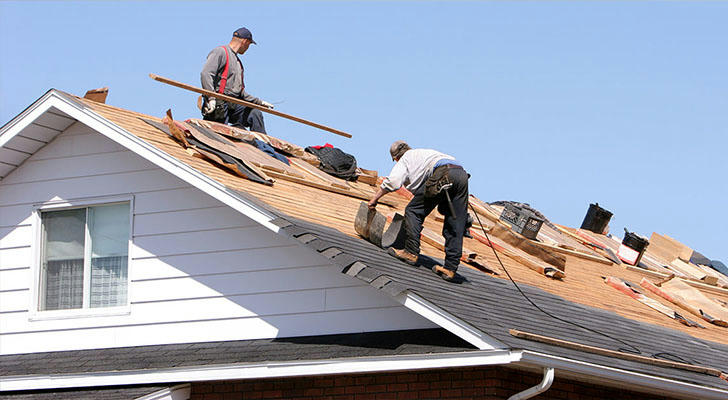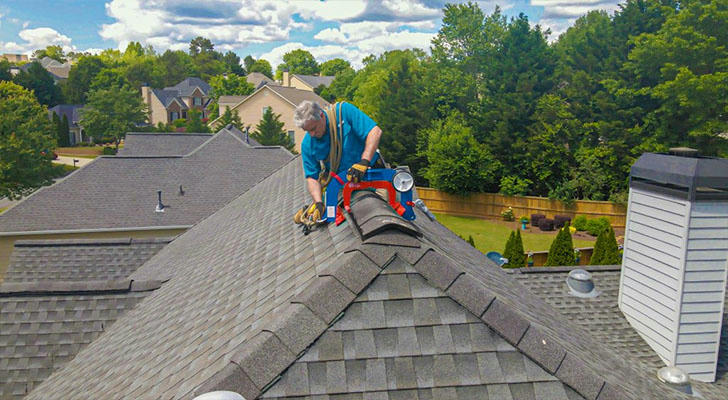What Kind of Training and Certification Do Roofers Need

In the construction industry, roofers play a crucial role as they are responsible for installing, repairing, and replacing roofs, ensuring the safety and durability of buildings. To enhance work quality and safety, training and certification are particularly important. This article will explore the training pathways, types of certification, safety training, and career prospects and development paths for roofers.
What Kind of Training and Certification Do Roofers Need?
1. Training Pathways
The training pathways for roofers mainly include the following methods:
•Apprenticeship Programs:
Typically lasting 2 to 3 years, apprentices gain practical work experience and skill training under the guidance of experienced roofers. During this period, apprentices learn the basics of roof installation, repair, and safety operations.
•Vocational Courses:
These courses provide qualifications (such as City & Guilds) covering skills related to flat and pitched roofs. Further specialized training courses can also be chosen, such as green roof installation or solar panel applications, to meet the market's demand for environmentally friendly and sustainable practices.
•On-the-Job Training:
This allows roofers to continuously improve their skills while working, adapting to new technologies and materials. Through learning in real work situations, employees can accumulate valuable industry experience that lays a foundation for future career development.
•Certification and Exams:
In certain regions, such as Quebec, roofers are required to obtain mandatory industry certifications, while in other provinces, this is usually voluntary. Successful completion of the interprovincial Red Seal exam allows qualified roofers to gain mobility between provinces, providing more opportunities for career advancement.

2. Types of Certification
The types of certification for roofers mainly include the following:
•Industry Certification:
Mandatory industry certification is required in Quebec, while in other areas it is typically voluntary. Obtaining certification can enhance professional standards and market competitiveness.
•Apprenticeship Certification:
Completing an apprenticeship program is usually a prerequisite for obtaining industry certification, where apprentices accumulate practical experience and skills under the guidance of experienced roofers.
•Red Seal Endorsement:
Qualified roofers who successfully pass the interprovincial Red Seal exam can receive Red Seal endorsement, allowing them to work across different provinces and increasing their job flexibility and opportunities.
•Professional Training Certificates:
Participating in vocational training courses and obtaining relevant certificates can provide roofers with more specialized knowledge, helping them achieve higher professional levels in specific areas such as green roofing or solar installations.

3. Safety Training
Safety training is crucial for roofers and mainly includes the following aspects:
•Regulations and Standards:Understanding and adhering to occupational health and safety laws and relevant safety regulations to reduce workplace risks.
•Hazard Identification:Helping roofers identify risks associated with their work, such as falls from heights, slips, and equipment accidents.
•Safety Operating Procedures:Mastering safety operating standards, accident response procedures, and emergency measures.
•Practical Operation Drills:Through simulated training, roofers can familiarize themselves with equipment and tools to improve their ability to respond to emergencies.
Regular Refresher Training:Conducting refresher training every three years to update knowledge and skills while ensuring adherence to the latest safety standards.
4. Career Prospects and Development Paths
The career prospects for roofers are broad and mainly include the following aspects:
•Career Advancement Opportunities:By accumulating experience, roofers can advance to positions such as senior roofer, site supervisor, or project manager; some may even become self-employed contractors.
•Income Potential:Depending on experience, a roofer's annual income typically ranges from £17,000 to £35,000. Self-employed roofers may earn higher incomes; certain specialized skills can enable them to earn £500 to £600 per week.
•Industry Demand:The demand for roofers in the construction industry continues to grow, especially in new construction and renovation projects. Emerging fields like green roofing and solar installations also offer more opportunities.
•Skill Enhancement and Professional Training:Roofers can continuously improve their skills by participating in vocational courses and professional training to adapt to market changes.
•Self-Employment and Entrepreneurship Opportunities:Experienced roofers may choose to start their own companies, achieving higher income levels and greater career autonomy.
5.Case Studies: Safety Accidents in Roofing Work
Safety is of utmost importance in roofing, and accidents due to inadequate safety training can have severe consequences. Here are three case studies that demonstrate the impact of safety lapses:
•Case 1: Fall Through Skylight
During a recent project, a roofer failed to follow safety procedures and fell through a fragile skylight. This incident resulted in severe injury and significant project delays. Investigations revealed that the employer had not provided adequate safety training or the necessary personal protective equipment (PPE), such as safety belts or non-slip shoes.
This tragic accident underscores the importance of proper safety training. Employers can prevent such incidents by ensuring workers are well-trained, aware of potential hazards, and provided with the proper safety equipment. Regular refresher courses further help workers stay updated on the latest safety practices and reduce the likelihood of accidents.
•Case 2: Ladder Failure Leading to Injury
In another case, a roofer suffered a serious injury when a ladder they were using failed due to improper maintenance. The ladder, which had been in use for several years without inspection, buckled under the roofer's weight, causing the worker to fall and sustain fractures. Further investigation revealed that the employer had neglected to include ladder safety and inspection in their training programs.
This highlights the importance of not only providing proper PPE but also ensuring that equipment used by roofers, such as ladders, is well-maintained and that workers are trained in safe practices. Incorporating ladder safety training as part of regular safety sessions can greatly reduce these types of accidents.
•Case 3: Roof Collapse Due to Overloading
A third incident occurred when a roofer was working on a flat roof that collapsed under the weight of excessive materials being stored improperly on the roof. The roofer fell from a significant height and sustained serious injuries. The employer’s investigation showed that safety protocols regarding material storage were not followed, and workers had not received proper training in handling heavy loads on roofs.
This case emphasizes the importance of proper planning and training, especially regarding the safe handling and storage of materials on roofs. Employers must ensure that roofers are aware of weight limits and storage procedures to prevent accidents.
6.Encouragement for Action
If you’re considering a career as a roofer, it’s crucial to invest in training and certification programs. By enrolling in apprenticeship programs, vocational courses, and safety training, you’ll gain the expertise needed to excel in the industry. These programs not only improve your skills but also enhance your marketability, offering better job prospects and earning potential.
Whether you aim to work for a roofing company or start your own business, the combination of formal training and hands-on experience will set you on a path to success in this dynamic field. Take the first step by exploring available training options today.
